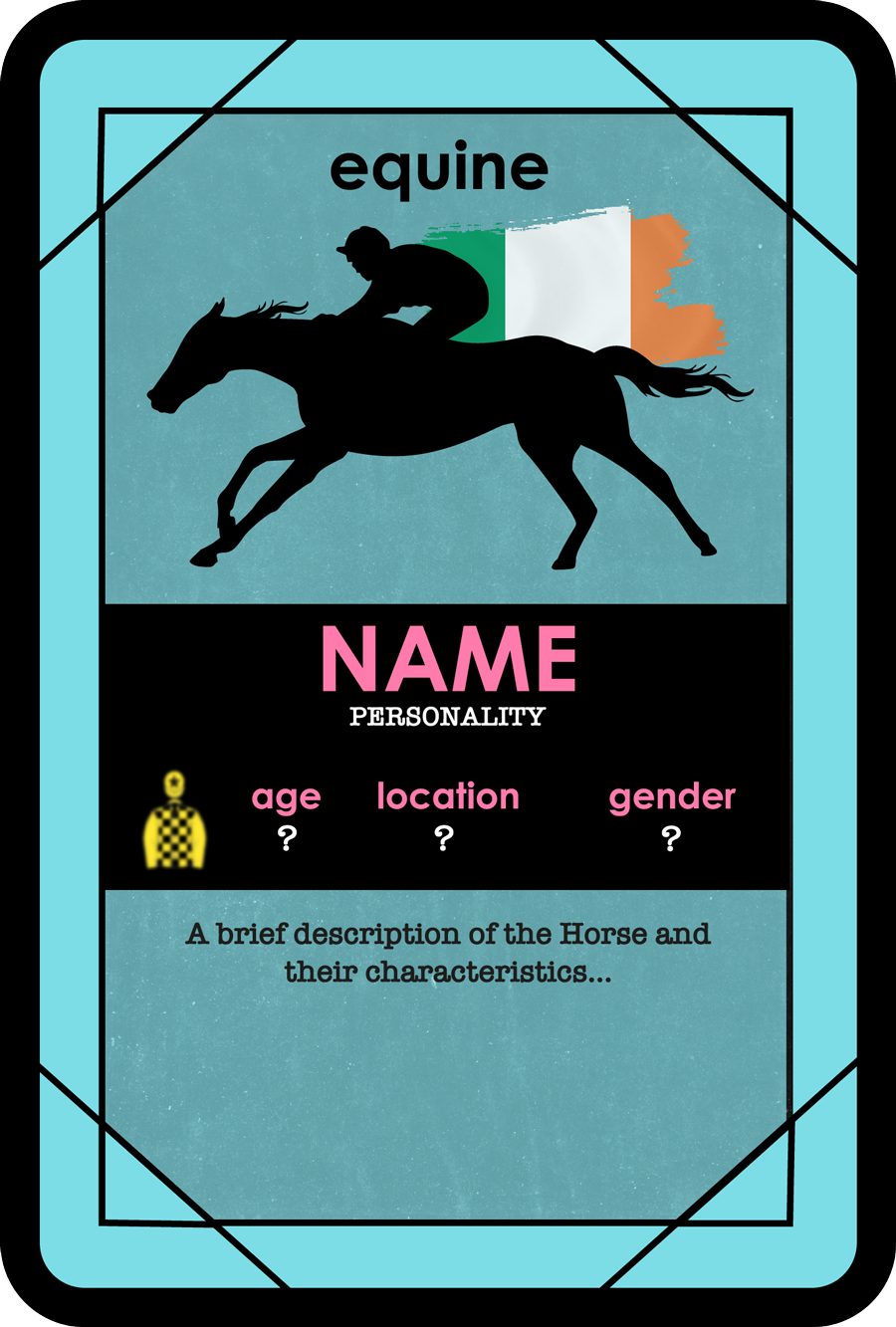
Use our map to find your equine
From the early humans of the Asian grasslands to the chariot-racing Romans of the Olympiad & the gun-slingin' Wild West, the timeless art of connecting with horses has been passed down through countless generations.
Local stables continue to be the heart of this enduring legacy in the shape of horse-racing. Once reserved for only nobility, now you can experience the excitement & heritage of this rich tradition through racehorse ownership.
Play with our map to find your equine soulmate & join this vibrant cultural history of one of the world's oldest sports...
There are no horses available in this region.
There are no horses available in this region.
There are no horses available in this region.
There are no horses available in this region.
There are no horses available in this region.
There are no horses available in this region.
There are no horses available in this region.
There are no horses available in this region.
There are no horses available in this region.
There are no horses available in this region.
Featured
Kickin' the latch
Frequently asked questions
can I expect prize money if my horse wins or places?
This varies by syndicate. As per the British Horseracing Authority's Rules of Racing legislation, 3.5-8% of race winnings go to the jockey and 6-10% to the trainer depending on the finishing position. The rest is distributed according to the syndicate's rules which are detailed in the shareholder agreement. We recommend reading the syndicate's terms carefully.
what do the cards mean?
Click on the red "CARD EXPLAINED" button. If you are using a mobile you will have to accept/reject cookies to see the card explained button.
what is a racing syndicate?
A racing syndicate is a collaborative ownership model where multiple individuals combine their funds to purchase shares in a racehorse. Syndicate members contribute financially towards the initial purchase of the horse and ongoing expenses like training fees, travel costs, and veterinary care. With Equine Sales, all these expenses are conveniently covered in a single upfront payment for the year, with no hidden charges or additional fees.
are there any hidden costs?
We partner with syndicates that are transparent in their obligations. You will find a share price breakdown on the horse listing page (once you clicked on the listing card). The only potential extra costs you might encounter are related to travel and any personal expenses during in-person visits.
what happens at the end of the ownership term agreement?
At the end of the syndicate term, typically the shareholder will have the option to renew the share at a reduced price to continue following the racehorse's career. In some cases, the horse may be retired or sold, a decision usually made by the majority shareholder where shareholders may have the right to vote depending on the terms of their agreement. Typically, shareholders must seek permission from the syndicate before selling their share.
Racehorse ownership
Racehorse ownership is all about the experience. Shares in a horse should not be viewed as traditional investments.
Ownership types vary among syndicates, typically involving full ownership or a lease. These agreements rarely extend beyond a year.
After the first year, current owners can renew their shares at the original price or at a reduced cost, excluding the initial purchase costs but covering training and day-to-day expenses.
Horseracing is a sport. It’s an exhilarating competition comprised of both people & magnificent horses. With their unique personalities, horses face life’s ups and downs, much like we do.
This is why microshares provide an opportunity for everyone to join this exciting journey at more inclusive prices – check out our FAQs for a full definition.
Benefits vary between syndicates for each horse, so be sure to read the terms and conditions carefully for each syndicate.
card explained
card colouring
- Purple: flats. A discipline of horse racing held on a level track without obstacles. The Flat season typically occurs in the UK & Ireland between March to November.
- Green: jumps. A type of horse racing - also known as National Hunt racing - where horses compete by jumping over obstacles such as fences and hurdles on the track. Jump season typically occurs between October to April in the UK & Ireland.
- Turquoise: flats & jumps. Able to compete in both flat racing and jump racing, demonstrating versatility in racing without obstacles as well as over fences and hurdles.

" the 7 equine personalities"
- Impulsive: Easily excitable and fiery. Can be high alert and ready to react at small provocations.
- Nonchalant: Super chill and laid-back. Takes everything in stride and rarely gets worked up.
- Introvert: Quiet and reserved. Prefers alone time and minimal interaction. Takes a while to warm up to new friends.
- Warrior: Brave and bold. Faces any challenge head-on with a fearless attitude; the hero of the herd.
- Social Butterfly: Everybody's friend.
- Rascal: Mischievous and playful. Always getting into trouble with a cheeky, curious nature. Needs a watchful eye and lots of distractions.
- Diva: Loves attention and being pampered. Expects special treatment and can be quite dramatic if ignored.
gender
- Filly: a young female equine, under the age of four.
- Colt: a young male equine, under the age of four, that remains ungelded (see "Gelding" definition).
- Mare: a mature female equine, aged four years or older.
- Gelding: a male equine, of any age, that has been castrated.
- Stallion: a mature male equine, aged four years or older, that remains ungelded, often referred to as an "Entire".
